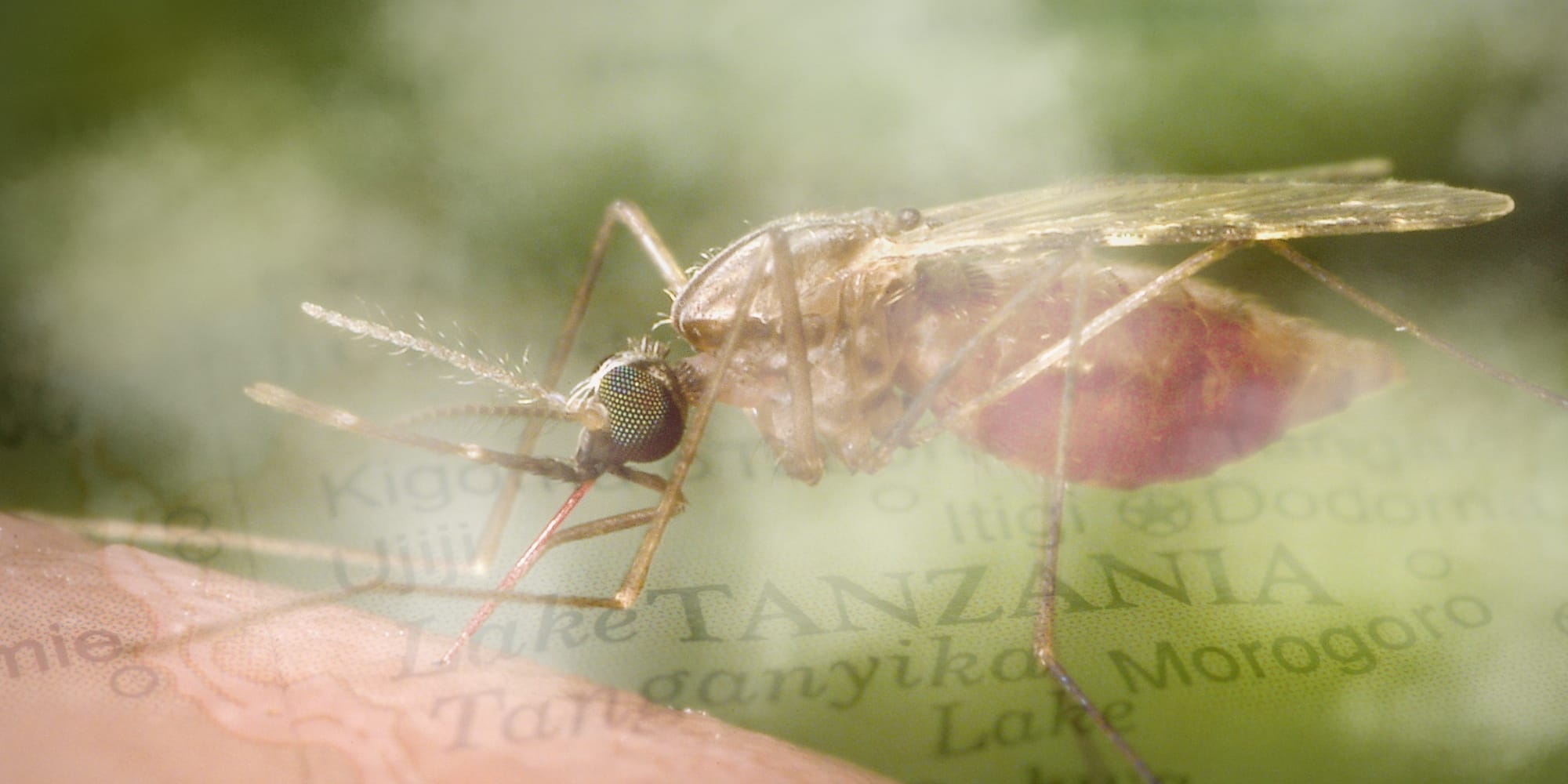MalariaGEN partners have used genomic data to observe, for the first time, a widespread insecticide resistance gene in Anopheles funestus mosquitoes – and an unexpected environmental suspect.
Knock-down resistance (kdr) mutations were one of the earliest to be linked to insecticide resistance, and have appeared in most of the Anopheles species responsible for spreading malaria. But they had never been spotted in An. funestus – the principal malaria mosquito in eastern and southern Africa – despite years of using the same chemical compounds to control the mosquito population.
Now, using MalariaGEN vector data from Tanzania, researchers have found the location in the An. funestus genome where kdr mutations occur. The discovery also raises new questions about how we use and dispose of insecticides, and what it means for malaria control.
 A mystery emerges in Morogoro
A mystery emerges in Morogoro
Taking a MalariaGEN sample set of 333 An. funestus mosquito genomes from 10 locations across Tanzania, the researchers soon found several genetic variants in the voltage-gated sodium channel (Vgsc) gene, which controls an essential component of the insects’ nervous system. This is the part of the genome where kdr mutations occur, preventing insecticides binding to these key channels.
Two of the variants seemed worth further investigation: L976F and P1842S, found in tight linkage, meaning they always appeared together. These looked very similar to the kdr mutations in another African vector, An. gambiae. By comparing with other Anopheles species and looking for signs of selection pressure on these genes, the researchers were convinced they were seeing kdr mutations in An. funestus for the first time.
However, some of the results seemed odd. These mutations were only found at high levels in one particular district of central Tanzania, Morogoro. And while they provided resistance to DDT, they did not protect the insect against pyrethroids, another class of insecticides. Pyrethroids are still widely used in bednets and elsewhere, but DDT was banned in Tanzania in the early 2000s. Finally, these kdr mutations also seemed to have been declining since 2017.
Unexpected environmental impacts
This set of findings suggested something peculiar had happened in Morogoro. Perhaps the continued unofficial use of DDT? Perhaps another source of the prohibited chemical entering the local environment?

A possible culprit was unearthed in a news story from 2012. Morogoro had been the site of an abandoned DDT manufacturing plant, with a stockpile of the banned substance sitting unused inside its warehouses. The Africa Stockpiles Programme, a US$6.8 million international programme funded through the Global Environmental Fund, later removed the chemicals and 300 tons of contaminated soil.
This huge exposure would explain why nearby mosquitoes were under such evolutionary selection pressure to develop resistance to DDT but not other insecticides. Its removal would also explain the decline in kdr mutations since 2017, and suggest that this adaptation takes a toll on the fitness of An. funestus in normal circumstances.
Thanks to this localised environmental incident, and the large amounts of mosquito genome data available through MalariaGEN, we now know something new about the An. funestus genome.
But it raises a wider question. What other environmental events could change the genetic makeup of malaria mosquitoes? The potential impacts of this stockpile were only discovered because the researchers were searching for kdr mutations in a species where they had never been observed before. What other impacts are happening to this and other species, but potentially hidden in the genetic noise of evolution?
This study is a reminder that it is not just our deliberate use of insecticides to control malaria vectors, such as the bednets and indoor residual spraying rolled out in recent decades, that shapes their genetics. Other activities, such as agricultural pest control or poorly stored waste chemicals, may be part of the picture too.
Tristan Dennis from the Liverpool School of Tropical Medicine, who co-led the study with Joel Odero from the Ifakara Health Institute and the University of Glasgow, said:
“If it turns out that the connection between kdr evolution and DDT contamination is confirmed, it suggests we narrowly avoided a serious problem – the inadvertent evolution of a harmful mutation that could have threatened malaria control in Tanzania. Fortunately, our research shows that there is currently no link between this mutation and resistance to the insecticides used to control disease vectors in Tanzania.
“However, we cannot rule out the possibility that kdr might become involved in resistance to these insecticides in the future. That is why it is crucial for us to study resistance to a broader range of insecticides as soon as possible.”
Deep dive into the research
Watch a recording of our Journal Club session where Joel Odero discusses this research.

 A mystery emerges in Morogoro
A mystery emerges in Morogoro